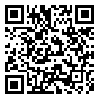BibTeX | RIS | EndNote | Medlars | ProCite | Reference Manager | RefWorks
Send citation to:
URL: http://refahj.uswr.ac.ir/article-1-758-en.html
Introduction: Price subsidization and income transfers have their main purposes- decreasing the price of essential items and providing some degree of social protections- in Iran's social protection system. Instead, price subsidies have led to increasing wasteful consumption, which distort production incentives and increase social division. This is why targeting subsidies, particularly energy, basic commodities and drug subsidies, have been the main source of concerning among the politicians for almost last two decades.
Cash payment is a method that the government has been trying to implement. Critics of the government's social policy emphasize on the economic as well as social consequences of cash payment method. Including: hyper-inflation, increased costs of production and invariable amount of consumption in short run.
Method : Lack of a reliable comprehensive data bank has been the main obstacle to an effective targeting. This study shows that due to the asymmetric information between government and individuals, cash payment, based on means-tested approach, is not an effective method of subsidy payment. This study, then suggests a self-selection method which is a way that individuals with different characteristic types can select the different baskets. Therefore, targeted household groups are separated in to four different groups with different performances over combinations of cash and in-kind subsidies.
Finding: Government can offer each group a specifically designed basket consists of different combination of cash and in-kind subsidies.
Conclusion: individuals by selecting right basket not only reveal their own type but also reduce the cost of government `s subsidizing program. Designing right baskets for right household groups in practice is the main challenge.
Received: 2012/06/30 | Published: 2011/07/15
| Rights and permissions | |
 |
This work is licensed under a Creative Commons Attribution-NonCommercial 4.0 International License. |





